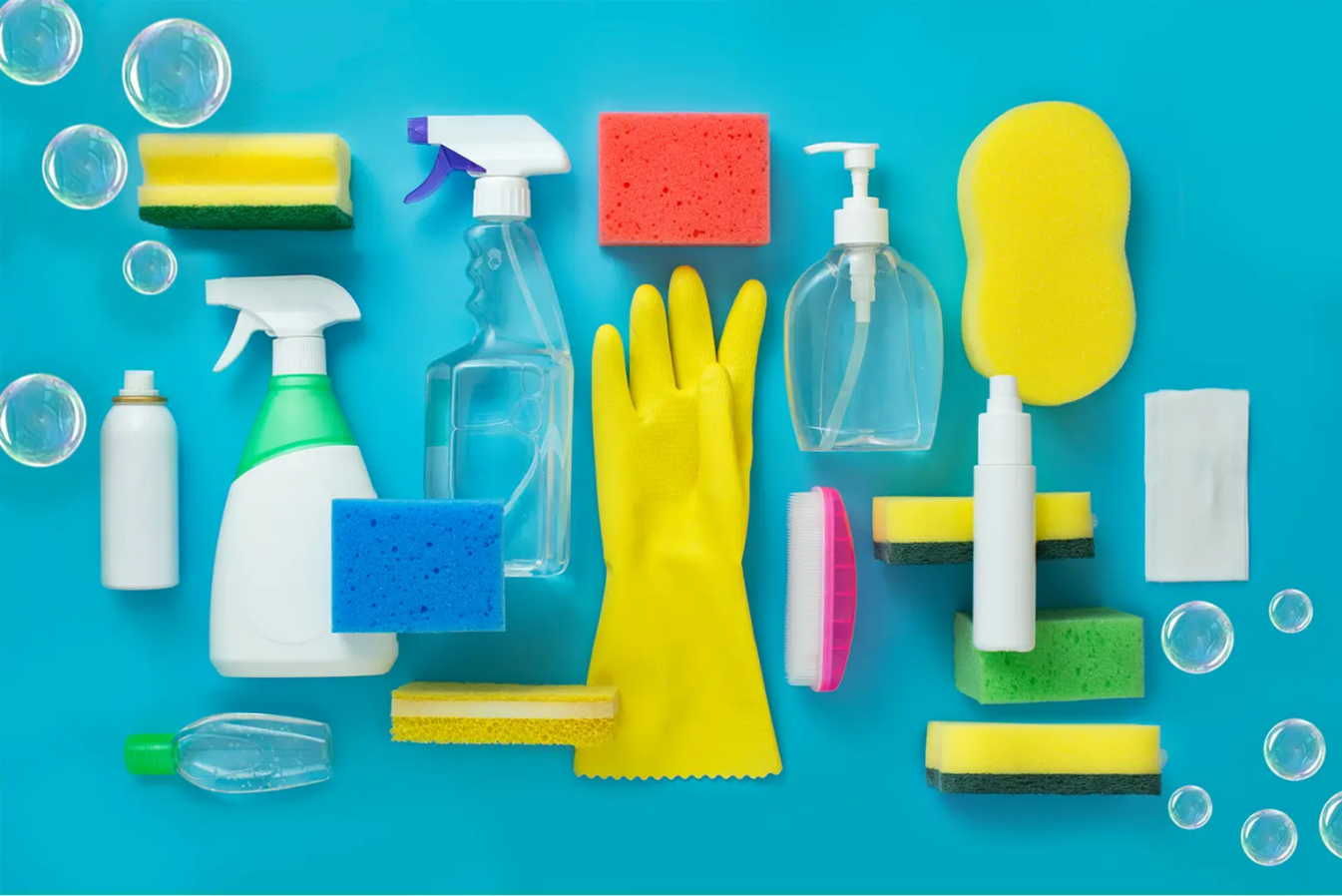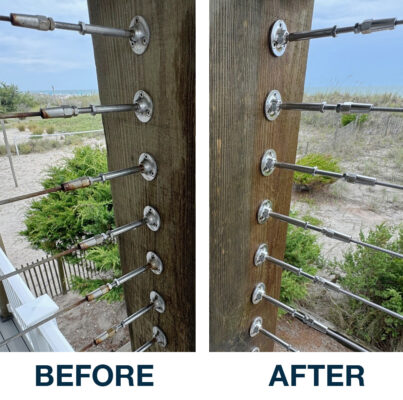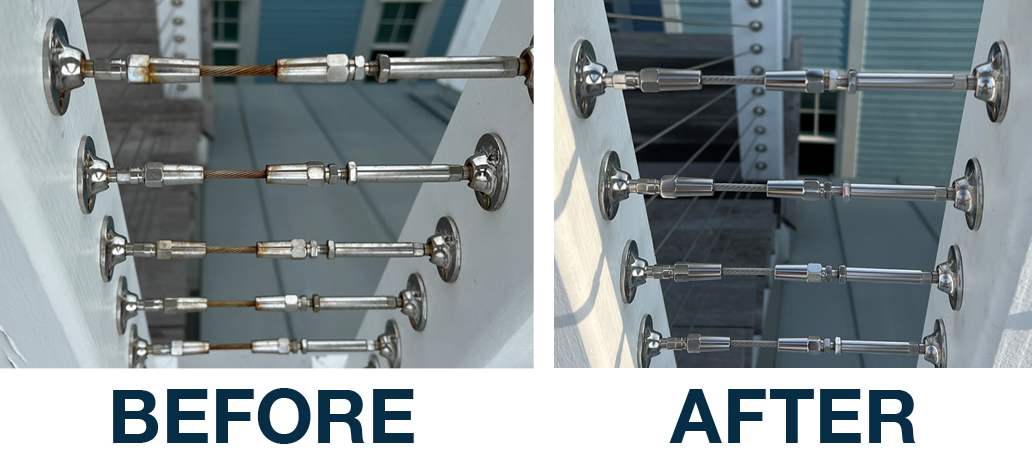We at Atlantis Rail Systems occasionally hear that a recently installed cable rail system is “rusting”! The reason and solution are as easy as washing the system immediately after being installed and routinely cleaned. The closer to the ocean or pool, the more frequently the cleaning has to be performed to wash the aggressive, harsh salt and chemicals off the stainless steel.

Atlantis Rail Systems uses high-quality 316L stainless steel to manufacture all of our RailEasy and HandiSwage fittings and cable. Although the 316L is “acid resistant”, salt water is one of the most aggressive and corrosive fluids and will require some maintenance to keep it as bright as it is when first installed. What most people see and think is “rust” is actually naturally occurring staining. The same concern will occur around pools or other water features utilizing chlorine.
The reddish-brown staining happens when salt air, moisture, and dirt collect on the tensioners and cable. Salt reacts with the dirt which contains iron particles and creates brown staining. This buildup occurs where there are seams, such as the crevices between the strands of the cable, and where the cable meets a termination point like the end of a tensioner. This also happens where there are threads or any kind of rough surface. The ocean water and mist have salt, bromides, sulfur, and other pollutants that cause staining if not cleaned regularly.

Oil from people’s hands can cause staining, cutting tools, grinding dust, and residue from pressure-treated lumber. Rainwater can carry the chemicals out of the lumber and onto the wire and fittings causing staining. Solvents and stains can cause this as well. Where cable passes through wood posts, the pressure-treated lumber leaches in. That’s why we recommend cable sleeves. Tensioners/fittings on a lower stair post are pointing up allowing water and dirt to collect and stain there too. We recommend Sikaflex non-acid silicone to seal the tips of tensioners.
If left for long periods of time without cleaning, saltwater will cause superficial pitting corrosion. Although such attacks may not cause operational failure, they will certainly look unattractive and can easily be avoided. The best and cheapest way to prevent pitting corrosion is to keep the contact time low. Consistently cleaning off the saltwater keeps the contact time short and the risk of corrosion extremely low. The more frequent the freshwater rinse, the better.

Overall Tips for Cable Rail Maintenance:
- Clean Regularly: If your system is near the ocean or a pool, wash it down immediately after installation and continue with routine cleanings. Salt and chemicals can cause staining and corrosion if not removed.
- Why Staining Happens: Even though we use high-quality 316L stainless steel, saltwater and chlorine are highly corrosive. What you might see as rust is typically staining from salt, moisture, and dirt reacting with iron particles.
- Maintenance Tips:
- Regularly rinse with fresh water to minimize salt contact time.
- Clean areas where dirt and salt collect, like seams and fittings.
- Use cable sleeves and sealants like Sikaflex non-acid silicone to protect vulnerable spots.
Keeping up with these practices will help prevent superficial pitting and keep your stainless steel cable rail system looking as shiny as when it is new!
Atlantis Rail Systems: The Leader in Cable Railing Systems
To learn more about beautiful and practical cable railing systems for your deck, stairs, and balconies, browse the Atlantis Rail Systems website. This Plymouth, MA-based company offers many unique, easy-to-install configurations complete with all necessary hardware to ensure a safe and code-compliant railing system.
For more information on planning cable railings for decks, contact the railing experts at Atlantis Rail Systems at 1-800-541-6829 or by completing the Contact Us Form.